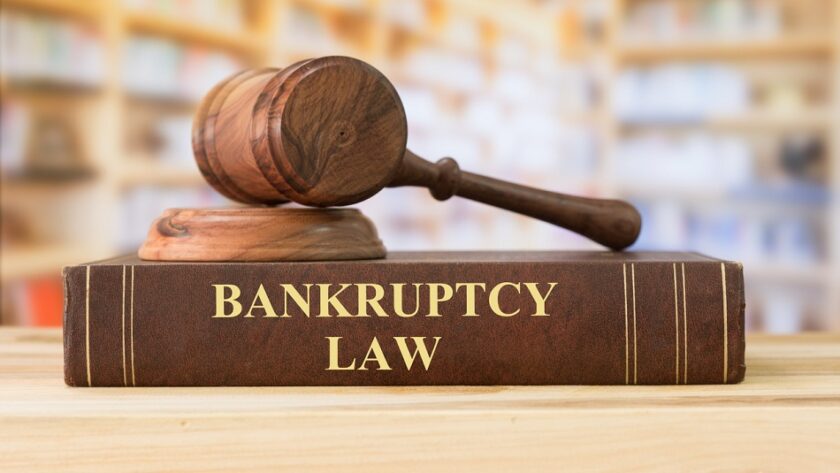Bankruptcy and insolvency proceedings are legal processes that are initiated when an individual or a company is unable to repay their debts. These proceedings are designed to provide a structured and fair way for debtors to manage their debts, while also protecting the interests of their creditors.
Bankruptcy is a legal status that is declared by a court when an individual or a company is unable to repay their debts. Bankruptcy proceedings can be initiated voluntarily by the debtor or by their creditors. Once bankruptcy is declared, the debtor’s assets are liquidated to repay their debts, and any remaining debts are typically discharged.
Insolvency, on the other hand, refers to a situation where a debtor is unable to meet their financial obligations as they become due. Insolvency proceedings can be initiated by the debtor or their creditors, and are aimed at restructuring the debtor’s debts so that they can be repaid over time. Insolvency proceedings may also involve the sale of assets to repay creditors.
Process of Bankruptcy
Bankruptcy is a legal process by which individuals or businesses who are unable to pay their debts can seek relief from their creditors. The process of bankruptcy involves several steps, which I will outline below:
- Filing for bankruptcy: The first step in the bankruptcy process is to file a petition with the bankruptcy court. This petition will typically include information about the debtor’s assets, liabilities, income, and expenses.
- Automatic stay: Once the petition is filed, an automatic stay goes into effect. This means that creditors are prohibited from taking any collection action against the debtor, including foreclosing on a home or repossessing a car.
- Meeting of creditors: The court will schedule a meeting of creditors, at which the debtor will be required to answer questions about their financial situation under oath. The creditors may attend this meeting, but they are not required to do so.
- Bankruptcy trustee appointed: A bankruptcy trustee will be appointed to oversee the case. The trustee’s role is to review the debtor’s petition and financial documents, liquidate any non-exempt assets, and distribute the proceeds to the creditors.
- Liquidation or repayment plan: Depending on the type of bankruptcy filed, the debtor may be required to liquidate some of their assets to pay off their debts, or they may be able to reorganize their debts into a repayment plan.
Process of insolvency proceedings
Insolvency proceedings refer to the legal process through which an individual or business entity that is unable to meet its financial obligations is declared bankrupt, and their assets are distributed to creditors to repay debts. In this case, you should consult an insolvency lawyer who can offer you expert legal guidance. The exact process of insolvency proceedings may vary depending on the jurisdiction, but there are generally some common steps involved. Here’s an overview of the typical process:
- Filing a petition: The first step in the insolvency process is the filing of a petition by either the debtor or the creditor to the court. The petition must provide details about the debtor’s financial condition, assets, liabilities, and creditors.
- Appointment of an insolvency professional: Once the petition is filed, the court appoints an insolvency professional to oversee the proceedings. The insolvency professional may be a licensed practitioner, a government official, or a court-appointed administrator.
- Moratorium: Upon appointment, the insolvency professional may declare a moratorium on all debt repayments and legal proceedings against the debtor. This gives the debtor some breathing space to assess their financial situation and come up with a plan to repay creditors.
- Valuation of assets: The insolvency professional conducts a valuation of the debtor’s assets to determine the extent of their value and how they can be used to repay creditors.
- Claims verification: Creditors are required to file their claims with the insolvency professional, who verifies the claims and prepares a list of creditors.
- Committee of creditors: The insolvency professional forms a committee of creditors, which comprises the creditors with the highest claims. The committee is responsible for approving or rejecting the debtor’s repayment plan.
- Resolution plan: The debtor is required to propose a resolution plan that outlines how they intend to repay creditors. The plan must be approved by the committee of creditors.
- Liquidation: If the resolution plan is not approved or if the debtor fails to adhere to the plan, the insolvency professional may recommend liquidation of the debtor’s assets to repay creditors.
- Distribution of assets: Once the insolvency proceedings are complete, the proceeds from the sale of assets are distributed among the creditors according to their claims.
Conclusion
Overall, bankruptcy and insolvency proceedings are complex legal processes that require the expertise of legal and financial professionals. If you are considering bankruptcy or insolvency proceedings, it is important to seek the advice of a qualified attorney or financial advisor.





